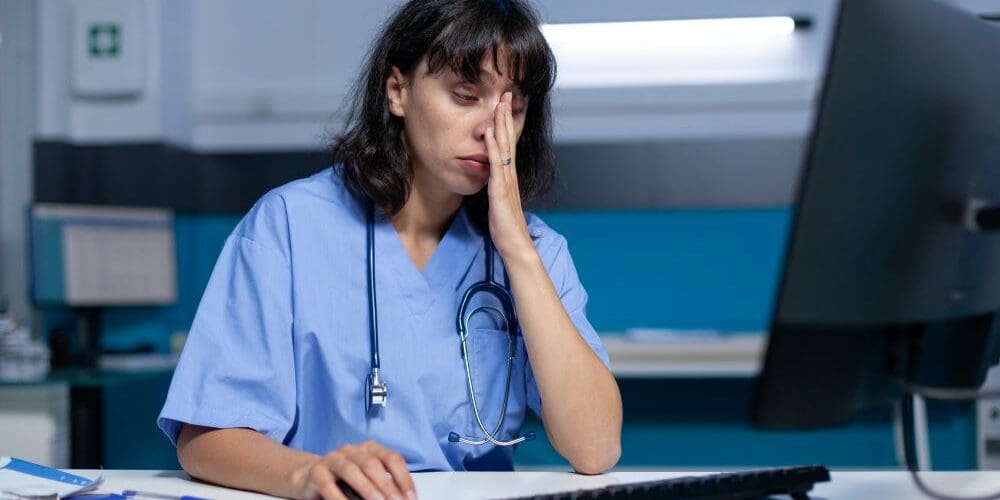Harassment of Healthcare Workers More Than Doubled in 4 Years
The increase in harassment appears to have led to more healthcare workers wanting to leave their jobs, resulting in more patient complaints.

Image via Adobe, by DC Studio
More than double the number of healthcare workers reported harassment at work in 2022 than in 2018, according to a new report from the Centers for Disease Control and Prevention (CDC). More than 13% reported threats, bullying, verbal abuse, or other hostile actions from patients and coworkers last year, compared to 6% in 2018.
The increased harassment has important implications for U.S. healthcare employee mental health. From 2018 to 2022, these workers experienced greater mental health declines than other workers.
Although employee burnout in healthcare was at a crisis level before the COVID-19 pandemic, the pandemic may have further impaired healthcare worker mental health and increased employees’ desire to leave their jobs.
Of the workers that did experience harassment, 85% reported feelings of anxiety, compared to 53% of workers who didn’t experience harassment. Six in 10 (60%) employees who were harassed reported feelings of depression, compared to 31% of employees who weren’t harassed. More than eight in 10 (81%) who were harassed are burned out, compared to 42% who were not harassed.
Additionally, the American Medical Association (AMA) has found that doctor burnout is at an all time high: 63%.
The increased mental health challenges of healthcare workers appears to be having a significant impact on patients’ ability to find timely treatment. According to a recent study by Kaufman Hall of hospitals, health systems, and medical groups, 63% said they are struggling to meet patient demand. Nearly a third (32%) said patient concerns or complaints have increased.
The CDC offered the following recommendations to address the mental health crisis in healthcare workers:
- To promote worker well-being, employers can modify working conditions and change aspects of the organizational structure that are associated with poor mental health. This study suggests such changes could include allowing health workers to participate in decision-making, building trust in management, providing supervisor assistance and enough time to complete work, and preventing and paying attention to harassment reports.
- Employers can learn more about health workers and mental health through NIOSH’s Health Worker Mental Health Initiative, and about mental health in general. Visit the NIOSH Total Worker Health® Program and the Healthy Work Design and Well-Being Program to learn more about how work conditions and work design impact worker well-being.
- Supervisors and workers can discuss ways to improve working conditions. For both supervisors and employees, NIOSH has training and resources for health workers on stress, fatigue, burnout, substance use, and suicide.
- The general public can support health workers by expressing appreciation for their essential work and treating them with understanding and respect.
If you or someone you know needs support now, call or text 988 or chat 988lifeline.org. 988 connects you with a trained crisis counselor who can help.
If you or someone you know needs assistance (in English or Spanish) with mental health concerns and/or substance use disorders, prevention, and recovery, please contact SAMHSA’s National Helpline at 1-800-662-HELP (4357) or visit https://www.samhsa.gov/find-help
If you appreciated this article and want to receive more valuable industry content like this, click here to sign up for our FREE digital newsletters!
 Leading in Turbulent Times: Effective Campus Public Safety Leadership for the 21st Century
Leading in Turbulent Times: Effective Campus Public Safety Leadership for the 21st Century
This new webcast will discuss how campus public safety leaders can effectively incorporate Clery Act, Title IX, customer service, “helicopter” parents, emergency notification, town-gown relationships, brand management, Greek Life, student recruitment, faculty, and more into their roles and develop the necessary skills to successfully lead their departments. Register today to attend this free webcast!














